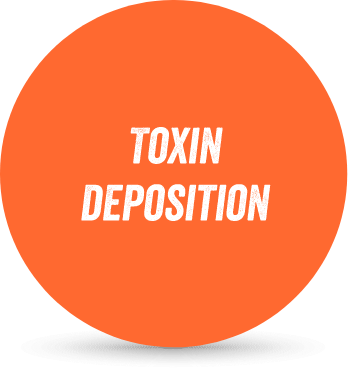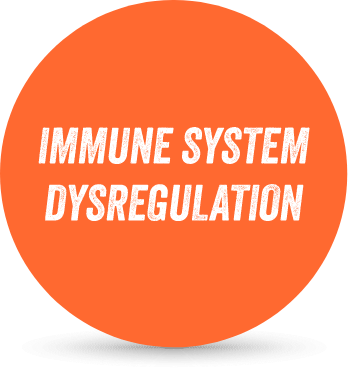CKD-associated pruritus is a multi-factorial complication and could be affecting more of your patients than you realise.1,2
Pruritus in CKD patients has commonly been referred to as uraemic pruritus, but as our understanding of the multifactorial pathogenesis of pruritus in CKD has developed, the term CKD-aP is now being used.1,3
In the general population, pruritus is often an uncomfortable, yet fleeting sensation. But for patients with advanced CKD or on haemodialysis, pruritus can persist, dramatically affecting quality of life.1,2,4–6
Despite over 50 years of research, CKD-aP remains underreported and undertreated.1,2
of all patients in the
DOPPS study reported
being bothered
by itching*2
of all patients in the
DOPPS study reported
being moderately to
extremely bothered
by itching2
of Medical Directors
included in the DOPPS
study underestimated the
prevalence of pruritus in
their facilities7
*Figure calculated based on total patients reporting being somewhat-extremely bothered by itching.
Watch these videos to hear from leading experts about the prevalence and pathophysiology of CKD-aP (NL-NA-2200032, NL-NA-2200004).
Prof. Maurizio Gallieni
Prof. Maurizio Gallieni is Associate Professor and Director of the School of Nephrology at the University of Milano, Italy. He graduated and trained at the University of Milano and Verona, Italy, and as a Research Fellow at Washington University in Saint Louis, MO, USA.
Prof. Gallieni’s research interests include; clinical nephrology, CKD and dialysis, CKD-mineral and bone disorders, dialysis access, onco-nephrology, glomerular diseases and simulation training in interventional nephrology. He is Coordinating Editor of the Journal of Vascular Access and has authored 285 publications indexed in PubMed (H index: Scopus:33).
Dr Kieran McCafferty
Dr Kieran McCafferty is a Consultant Nephrologist and Renal Clinical Trial Lead at Barts Health NHS Trust and Senior Lecturer at Queen Mary University London. He is also the Deputy UK NIHR nephrology and Renal Network Lead for the North Thames.
Dr McCafferty’s research interests include haemodialysis, diabetic kidney disease and uraemic cardiovascular disease, however his work focuses on the development and delivery of nephrology clinical trials locally and nationally.
Pathophysiology of CKD-aP
Research suggests that the pathophysiology of CKD-aP is multifactorial and is likely caused by toxin deposition, opioid dysregulation, immune system dysfunction and peripheral neuropathy.1
An initial theory of CKD-aP pathophysiology implicated “uraemic toxins” including vitamin A, aluminium, calcium, phosphorus, and magnesium. This theory was based on several early observations:
- The association of CKD-aP with underdialysis and with higher calcium, phosphorus, and parathyroid hormone (PTH) levels
- The improvement in CKD-aP prevalence rates over time
- Improvements in pruritus after treatment of high calcium, PTH, and phosphorus levels, including with parathyroidectomy
It is currently thought that underdialysis and toxin deposition may cause CKD-aP in a subset of patients.
In these patients, management of CKD-aP should focus on optimisation of haemodialysis in order to
achieve Kidney Disease: Improving Global Outcomes (KDIGO) goals for Kt/V, calcium, phosphorus,
and PTH.
The opioid pathway, with receptors located in the brain, peripheral nerves, keratinocytes, melanocytes, hair follicles, and immune cells, has been increasingly recognised as an important modulator of itching. This theory of CKD-aP pathophysiology suggests that overstimulation of central mu-opioid receptors, antagonism of peripheral kappa-opioid receptors, or an imbalance of stimulation and antagonism of mu- and kappa-opioid receptors causes itching.
This theory of CKD-aP pathophysiology suggests that microinflammation in the skin and possibly systemic inflammation stimulate itching. Higher levels of inflammatory markers are seen in haemodialysis patients, including T-helper 1 cells, C-reactive protein, interleukin-6, and interleukin-2, support this theory. Furthermore, CKD-aP is associated with high white blood cell counts, low albumin and high ferritin levels. The allergic response may also be dysregulated in CKD-aP. Increased levels of eosinophils, mast cells, in addition to histamine and tryptase, have been found in patients with CKD-aP.
Neuropathic itching is thought to result when primary afferent sensory neurons or interneurons are activated out of proportion to or independent of any detectable causative substances (such as toxins). This theory is supported by observation of a high prevalence of peripheral sensorimotor neuropathy and dysautonomia in haemodialysis patients, which may explain their itching. Furthermore, haemodialysis patients with paraesthesia and restless leg syndrome more frequently have CKD-aP.

Vitamin A, aluminium,
calcium, phosphorus,
magnesium1

Overstimulation
of mu-opioid receptors
Antagonism of kappa-opioid receptors1

Skin microinflammation Allergy: eosinophils, mast cells, histamine
C-reactive protein, interleukin (IL)-6, IL-2, white blood cells, ferretin1
Abnormal skin innervation and nerve conduction1
Have you only scratched the surface of CKD-associated pruritus?
CKD patients undergoing haemodialysis already have a poor quality of life, which is exacerbated by CKD-aP.4–6 Uncover how CKD-aP could be affecting your haemodialysis patients’ sleep quality, social relationships and mental health.
- Verduzco H, Shirazian S. CKD-associated pruritus: new insights into diagnosis, pathogenesis, and management. Kidney Int Rep. (2020);5(9):1387–1402.
- Sukul N, Karaboyas A, Csomor P, et al. Self-reported pruritus and clinical, dialysis-related, and patient-reported outcomes in hemodialysis patients. Kidney Medicine. (2020);3(1):42–53.e1.
- Patel T, Freedman B, Yosipovitch G. An update on pruritus associated with CKD. Am J Kidney Dis. (2007);50:11–20.
- Ramakrishnan K, Bond TC, Claxton A, et al. Clinical characteristics and outcomes of end-stage renal disease patients with self-reported pruritus symptoms. Int J Nephrol Renovasc Dis. (2013);7:1–12.
- Shirazian S, Aina O, Park Y, et al. Chronic kidney disease-associated pruritus: impact on quality of life and current management challenges. Int J Nephrol Renovasc Dis. (2017);10:11–26.
- Tsai YC, Hung CC, Hwang SJ, et al. Quality of life predicts risks of end-stage renal disease and mortality in patients with chronic kidney disease. Nephrol Dial Transplant. (2010);25:1621–1626.
- Rayner H, Larkina M, Wang M, et al. International comparisons of prevalence, awareness, and treatment of pruritus in people on hemodialysis. Clin J Am Soc Nephrol. (2017);12:2000–2007.

























